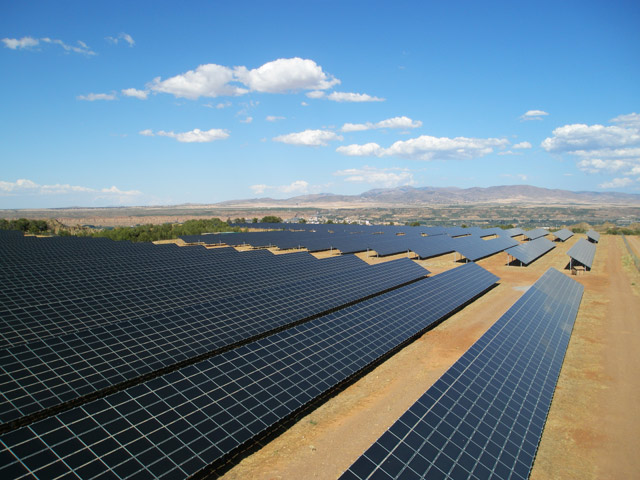The year just passed saw a 161 GW increase in global renewable energy capacity with solar outpacing wind, shows data released by the Abu Dhabi-headquartered International Renewable Energy Agency (IRENA) on Thursday.
According to IRENA’s Renewable Energy Capacity Statistics 2017, by the end of last year the world’s renewable generation capacity increased by 8.7% to reach 2,006 GW, with solar setting a new record high of 71 GW.
Therefore, last year marked the first time since 2013 that solar outpaced wind power, which added 51 GW. Furthermore, hydropower and bioenergy capacities went up by 30 GW and 9 GW respectively, which makes 2016 the best year yet for bioenergy capacity growth. Geothermal capacity increased by just under 1GW.
“We are witnessing an energy transformation taking hold around the world, and this is reflected in another year of record-breaking additions in new renewable energy capacity,” said IRENA director-general Adnan Z. Amin.
“This growth in deployment emphasizes the increasingly strong business case for renewables, which also have multiple socio-economic benefits in terms of fueling economic growth, creating jobs and improving human welfare and the environment. But accelerating this momentum will require additional investment in order to move decisively towards decarbonizing the energy sector and meet climate objectives. This new data is an encouraging sign that though there is much yet to do, we are on the right path,” Amin added.
As it accounted for 58% of new renewables additions, Asia was the fastest-growing region last year, with a year-on-year increase in capacity of 13.1%.
It was also the hotspot of solar growth, with a total of 50 GW of new capacity. China’s 34 GW was the major contributing factor to that figure, taking the continent’s combined capacity to 139 GW.
Other countries with significant additions included the U.S. (11 GW), Japan (8 GW) and India (4 GW).
Meanwhile, Europe expanded its solar capacity by 5 GW to reach 104 GW of cumulative solar generate capacity, with Germany and the U.K. taking the lead once more.
This year’s edition of Renewable Energy Capacity Statistics contains for the first time separate data for off-grid renewables that, according to IRENA, reached 2,800 MW. Roughly 40% of off-grid electricity came from solar energy and 10% from hydropower.
This content is protected by copyright and may not be reused. If you want to cooperate with us and would like to reuse some of our content, please contact: editors@pv-magazine.com.




Once you correct for the large difference in capacity factors (roughly 40% for wind, 35% for solar), wind is still comfortably ahead – for a couple more years.
A question for PV Magazine: with the arrival of commercial thermal solar technology, should the magazine’s scope be widened to include the sector?
Dammit, the capacity factor for solar should be 25%. Please correct in moderation.